It seems to me that, for a long time, we were searching for that particular social order that will guarantee equal rights for all, flawless community development and all in cooperation and harmony with nature. So we got a handful of systems, the pantheons, religions and political systems that have this ideal in their foundation, but these are too often lost along the way. We lose sight of welfare of the community and turn to ourselves, not caring more for others. I think, it is a question of consciousness. So we unfortunately failed to initial enthusiasm, and turned it, once more, into legend and fantasy about an incomparable utopia. Since that, everything has remained just as fairy tale, which has been thought, by the way, during the break in the global fight for survival. Another lullaby.
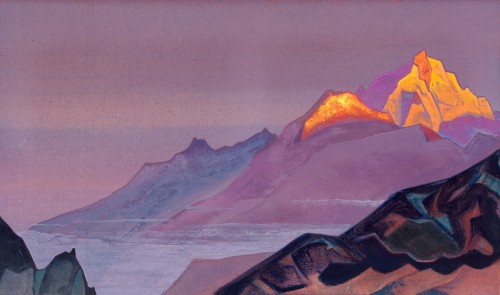
Here I will try to walk through some of these social ideals reserved for a small number of selected ones, with special emhasis on two myths – myth of Shambhala and Agartha. Both myths are so far from today’s views of the world and, as such, they are moved in the underground. Which coincides perfectly with the practice of expelling in darkness of the subconscious and inner being all of districts that do not coincide with the aspects that we understand.
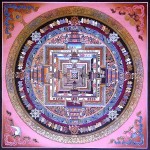
Shambhala is an ancient mystical kingdom hidden in the interiors of Asia, behind the white peaks of the Himalayan Mountains. It finds it’s stronghold within Buddhist tradition and works like the Kalachakra Tantra and ancient texts of Zhang Zhung, although the motives comes from the Hindu myth of the conqueror Kalki in literary piece of Mahabharata. In a free translation, the word “shambhala” means a place of peace, happiness and moderation. The influence of this myth has gone far beyond the framework of Buddhism, affecting many spiritual movements and inspiring them to go in search of this hidden world.
According to tradition, Shambhala is populated exclusively by enlightened souls, in their never-ending eternal quest and for mystical comprehension of God. The central place, in myth of Shambhala, is the capital city of Kalapa. Legend says that one of the kings of Shambhala, will establish once again the golden age of civilization, turning it towards pure spirituality. Once he leaves his secret chambers of inner city. As in every spiritual tradition, some sources suggest that the myth of Shambhala should only be viewed and interpreted as an inner spiritual adepts call, not a physical place on the world map. More like a sublime state of mind, consciousness. But the interpretations are very different, whether are coming out of external or internal orders of Tibetan tradition. Until now, various proposals were put forward on the question where is actual location of Shambhala. But a good part of them coincide and reveals, in analysis of certain texts, that the hidden entrance to the underworld should be at higher levels of the Himalayas, in the vicinity of Dhauladhar mountains, where even the Dalai Lama, while in exile, governing Tibet.
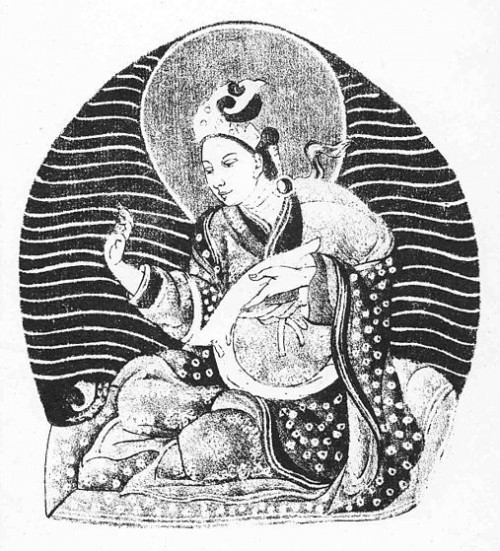

Western civilization was familiar with the story of Shambhala in the beginning of the 17th century, when Portuguese Catholic missionary Estevao Cacella first published information about it. In the 19th century myth takes a lot more western attention, more than ever, through the work of the Theosophical Society and H.P.Blavatsky, than the whole story takes much more detailed analysis on behalf of the esoteric tradition of the east. In her many works Blavatsky reffered Shambhala as a hidden society within Himalayas, but also as a purely spiritual state to be achieved by certain individuals. On the other hand, the work of the Theosophical Society has also forced many expeditions in search of the promised land, both by Soviet Russia, and later by Nazi Germany and the Third Reich itself. In that myth Nazis saw motives of higher, noble, and pure race. So many times, since 1930s to the end of WWII, they organized many expeditions that had intended to find as much physical evidence to support the story of Shambhala. After the war, there were found a lot of materials regarding the topic that Nazi Germany worked on.
Also, the legend of Shambhala was often associated with Agartha motive, which is an entirely different concept. From all of this, Shambhala was perpetuated as negative concept, though for absolutely no valid reason, on the contrary. This myth largely shaped the famous novel Lost Horizon (1933), by James Hilton. He is also the creator of the concept of Shangri-La, a fictional utopia in the region of the Himalayas, completely isolated from the outside world. Inhabited by sages.
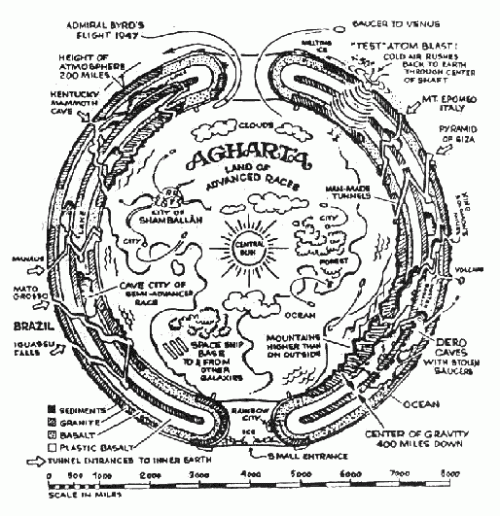

Another myth is the myth of Agartha and it is often mixed with Shambhala. Specifically, it is a city in the underground chambers of our planet. The first informations on this subject, in the western world, was placed by Alexandre d’Alveydre. But unlike Shambhala, Agartha was supposed to be located in the center of the hollow Earth. Legend says that the doors of Agartha will open to mankind when it reaches a certain level of mental maturity and spiritual growth. A common motive, in this myth is a symbol of eternal Sun, which allows the development of life in the depths of the Earth. The assumption is that it is a flaming heart of our planet, inflamed since it’s very creation in the past. The myth also says that there are certain spots on the surfface of planet that serve as entrance gates into this mystery city and that the map of these sites is a closely guarded secret of Tibetan monks. Of course, Tibet is mentioned as one of the key places of entry into Agartha underground. As in the previous myth, here we’re talking about utopia, represented in the picture of wisdom and prosperity for certain number of scholars who live there. Ferdynand Ossendowki in his book “Beasts, Men and Gods” (1922) talks about Agartha as underground kingdom turned towards the spiritual prosperity of the whole civilization of planet Earth. Both above and in underground regions and its influence on all the religions out there. For Buddhists, the myth is also known as Agarti.

It seems that both of these myths inspired the great English writer and politician Edward G. E. Bulwer-Lytton to write his popular novel “Vril: The Power of the Coming Race (1871). In this literary work he described, to the details, the hidden world in the depths of our planet, giving incredible descriptions of landscapes and superior beings who inhabit these areas. Their secret is the mysterious vril energy, which they mastered with their mind power. Otherwise, it is a race of people living in absolute equilibrium with nature and which are obliged to return to the Earth, where they were long ago forced underground. The novel shaked the grounds, after it’s publication, in the pre-war Germany and inspired many of their mystics to engage deeper into many stories and legends of secret civilisations under the Earth, especialy ones close with Germanic traditions and whose secret organization had a significant impact in the upcoming years.
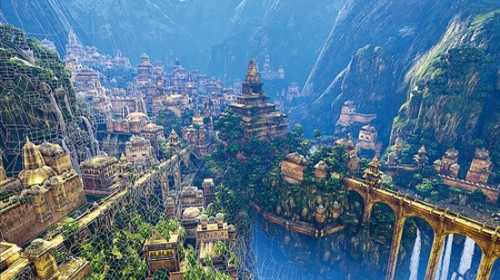
In addition of these, two central myths, there are several others that describe long lost civilizations and underground kingdoms. Such are the tales of Hyperborea or Thule, which also describe places that are heavens of peace and where the great minds of all ages reside. The, so-called, spiritual centers. Yet, the legend of Shambhala and Agartha are pretty special because they are behind long tradition of strong eastern religious and philosophic concepts, for thousands of years. Hidden from the eyes of most, but in the wide open.
.
For P.U.L.S.E World: Dražen Pekušić

You must be logged in to post a comment Login